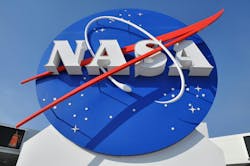Editor’s note: This story has been updated to reflect a NASA spokesperson’s clarification that the Artemis campaign will continue under a different architecture, rather than being scaled back to only Artemis II and III as previously reported. More information about the updated plans is expected to be released soon.
WASHINGTON - The White House’s proposed $1.7 trillion federal budget for Fiscal Year 2026 includes a significant reduction in funding for the National Aeronautics and Space Administration (NASA). The budget must now undergo the congressional appropriations process, where lawmakers will ultimately determine funding levels.
The proposal would reduce NASA’s budget from $24.8 billion to $18.8 billion, a 24.3% decrease, and eliminate or scale back multiple high-profile programs, including the Mars Sample Return mission, future Artemis moon missions, and the Lunar Gateway space station. NASA’s Science Mission Directorate would see a 47% reduction, impacting missions that monitor climate change, natural disasters, and global food production.
The Trump administration’s plan would shift NASA toward greater reliance on commercial partners and prioritize human missions to the moon and Mars. More than $7 billion would be allocated for lunar exploration, and a $1 billion increase would be allocated for Mars-focused programs. NASA would also begin transitioning the International Space Station to commercial successors by 2030.
MDA Space joins Starlab Space as partner in commercial space station venture
Mission cuts
The Mars Sample Return mission, which was originally designed to bring Martian rock and soil samples back to Earth, would be canceled. NASA's Space Launch System (SLS) rocket and Orion crew capsule are expected to be retired after Artemis III. The Lunar Gateway—despite its first module arriving in Arizona from Italy in April—would be scrapped. While earlier reports suggested that the Artemis program would be scaled back to include only Artemis II and III, a NASA spokesperson has since clarified that "The Artemis campaign will continue under a different architecture." The spokesperson also told Military + Aerospace Electronics that additional details about the revised program are expected to be released in the coming weeks.
Despite the cuts, acting NASA Administrator Janet Petro emphasized the agency’s ongoing goals. "This proposal includes investments to simultaneously pursue exploration of the Moon and Mars while still prioritizing critical science and technology research," she said.
The proposed budget also eliminates funding for climate-focused "green aviation" projects and diversity, equity, inclusion, and accessibility (DEIA) initiatives, redirecting those funds toward what the administration describes as NASA’s "core mission."
Vast announces the Haven-1 and Vast-1 commercial space station missions
Critics, including the American Astronomical Society, warn that the broader cuts across federal science agencies - 56% to the National Science Foundation and 14% to the Department of Energy’s Office of Science - could cause long-term damage to U.S. scientific leadership.
"These proposed cuts will result in the loss of American leadership in science," the society stated. "The U.S. will lose at least a generation of talent to other countries that are increasing their investments."
About the Author
Jamie Whitney
Senior Editor
Jamie Whitney joined the staff of Military & Aerospace Electronics in 2018 and oversees editorial content and produces news and features for Military & Aerospace Electronics, attends industry events, produces Webcasts, and oversees print production of Military & Aerospace Electronics.
